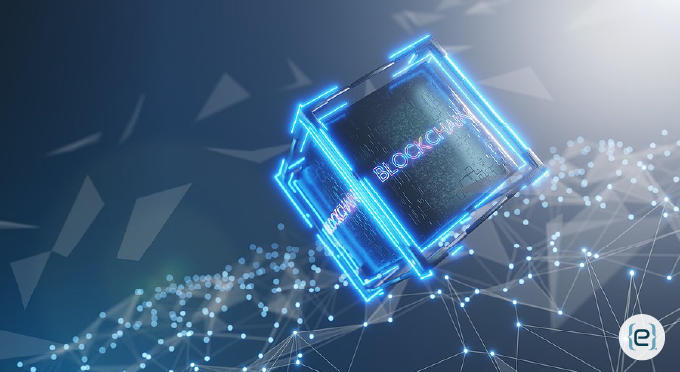Increasing cyberattacks, complex privacy regulations, and rampant identity theft dominate today’s digital landscape. Consequently, cyber security has become top priority, and organizations need to employ increasingly effective strategies to protect their information assets. One promising technology involves using blockchain for data security.
By enabling secure and transparent transactions without the need for intermediaries or centralized authorities, blockchain offers a new paradigm for enhancing cyber security. Some key uses of blockchain for cyber security include preventing identity theft, preserving data integrity, and sending encrypted messages.
Brief Overview of Blockchain Technology
Blockchain consists of a system of decentralized ledgers, or databases, that store records of transactions. The data is distributed among a network of computers, called nodes. These nodes communicate and agree on the state of the ledger. This process is called consensus and ensures that everyone has the same version of the truth.
Data in the blockchain is organized into blocks, and the blocks are linked together by cryptographic hashes, or digital fingerprints. The chain of blocks is immutable. This means that once a block has been added, it cannot be altered or erased without alerting the network. This makes the data more trustworthy, as it prevents fraud or tampering.
Additionally, every block on the chain contains a timestamp and a reference to the previous block’s hash. This creates a secure and traceable history of the data.
Blockchain first came to public attention with the rise of cryptocurrencies such as Bitcoin in 2008. It has evolved since then, proving highly useful for smart contracts, supply chain management, voting systems, and more.

Enhance Identity Management
One important use of blockchain involves managing and storing digital identities. A digital identity represents a person or other entity in the online world. It can include personal data and professional data. It can also include behavioral data such as preferences, habits, and online activities.
Digital identities can be used for authentication, authorization, and access control. Traditionally, centralized authorities collect and store sensitive data from users and issue credentials to allow them to prove their identity. But these authorities can be vulnerable to hacking, corruption, and misuse of data.
Blockchain enables a tamper-proof way of managing digital identities that does not involve an intermediary. This means that users create their own digital identities, storing them on encrypted platforms that no one else can access. It also provides increased security for IoT devices by improving authentication and determining access based on predefined conditions.
Preserve Data Integrity
Any attempt to modify or remove data stored on the blockchain will be detected and rejected by the network. This makes the blockchain a valuable option for storing sensitive data such as personal health information (PHI) and financial data. For example, it can be used to store and share medical records, ensuring that only authorized providers and patients can access them.
Additionally, because transactions are recorded multiple times across many computers, there is no single point of contact. That is, an attack on one part of the system does not affect the other areas. This makes it more difficult for a bad actor to corrupt the entire system using malware. Multiple methods of complex encryption in blockchain provide yet another layer of security.

Facilitate Secure Messaging
In secure messaging, messages are encrypted and decrypted only by the sender and receiver, preventing anyone else from accessing or intercepting them. Blockchain helps to enhance secure messaging by providing end-to-end encryption, peer-to-peer transmission, anonymity, and timestamping.
This proves particularly important for sending sensitive data such as medical information or payments. For instance, blockchain enables users to verify the identity and reputation of their contact before transferring money. All details of the transaction are encrypted, and the sender and receiver can access a complete, unalterable history of the transaction.
Limitations and Risks to Consider with Blockchain for Data Security
While powerful, blockchain does currently have both limitations and risks that organizations should consider carefully. For instance, blockchain networks require users to manage their own cryptographic keys, which can be cumbersome. And if a user forgets their private key, they may lose access to funds or data permanently.
Secondly, blockchain networks are often isolated and incompatible with each other. This can hinder data exchange and integration. And blockchain networks have limited throughput and storage capacity, so they may process transactions more slowly than other technologies.
Data Security Requires Multi-faceted Approach
Blockchain can play an important role in securing sensitive data when used appropriately. However, it does not eliminate the need for other cyber security best practices. To better understand the cyber security options available and evaluate the best approach for your organization, contact the data security professionals at eMazzanti Technologies.
Free Cyber Security Assessment
The time is NOW to begin planning your Cyber Security Strategy







